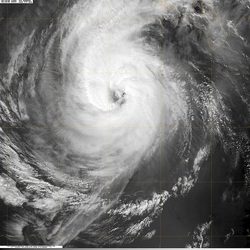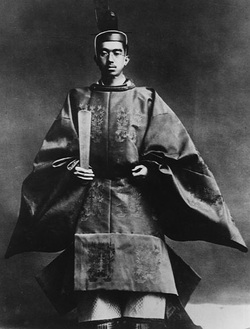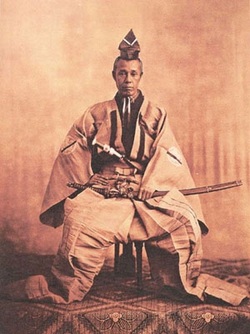This is your new blog post. Click here and start typing, or drag in elements from the top bar.
This is your new blog post. Click here and start typing, or drag in elements from the top bar.
What are the countries and bodies of water around Japan?
The main countries around Japan are North and South Korea, and Russia. The main bodies of water around Japan are, the Pacific Ocean and the Sea of Japan also known as the East Sea. The difference between Buddhism and Shintoism is that there are two dominant faiths in Japan: Buddhism and Shinto. Most Japanese follow traditions in both religions. Buddhism reached Japan in the 6th century and is derived from the teachings of the Buddha. Buddha means "one who has awakened." Anyone who "awakens" (by attaining Nirvana) becomes a buddha. Buddha's teachings are collected in sutras, which can be found in the "Tripitaka" (a compilation of documents relating to Buddhist tradition). Unlike Buddhism, Shinto has no recognized originator. It is sometimes said to be Japan's official religion because it developed in that country. Shinto tradition holds that the human race is descended from "kami" (deities that inhabit the rocks, trees, and other natural elements of Japan), so all humans are tied to nature.
First, came the emperor. The Emperor and the imperial family "had the highest social status." He was a figurehead, a leader in name only. He was the religious leader, but had little political power, and in reality was under control of the shogun's clan.
Second, came the shogun: The shogun was part of the warrior class, and considered to be a noble. The shogun was the military leader of the most powerful Emperor's clan. The clans often fought to acquire this high social status. The shogun was the actual political ruler. He had a high social status and those of the other classes provided for his economic needs in return for protection and privileges (e.g., a small portion of land, some of the produce of the land). Third, came the diamyos: The daimyos were a part of the warrior class. Daimyo translates to mean "great names." The daimyos were the shogun's representatives. They ran the estates according to the shogun's rules. Their swords were their most valuable possessions because they were required to use them often to demonstrate their loyalty to the shogun. They had high social status as members of the warrior class. Fourth, came the samurai: The samuai were members of the warrior class. They were professional warriors of the military aristocracy. They were loyal to the shogun and daimyos, in whose castles they resided. Their position gave them fairly high social status, but little political power. Their economic needs were met by lower classes similar to the arrangement with the daimyos and the shogun. Fifth, came the ronin: The ronin were paid soldiers whose loyalty was with the leader they defended at the time. The ronin were wandering samurai who had no daimyos. They worked as body guards for rich merchants or as paid soldiers during civil war. They had low social status, no political power and they depended on others for their economic well-being. Sixth, came the peasants: The peasants were the largest class, constituting 90% of the population. The peasants included farmers and fishermen. They had very low social status, no political power and were very poor. They were valued because they produced the food for all other classes, and often made the material for clothing. The peasants paid taxes to the daimyos and shogun in the form of rice and work. Often peasants starved when they had to give up more than two-thirds of the year's crops to the upper classes in return for being able to remain on the land. Seventh, came the artisans: The artisans were the craftspeople who made a variety of wood and metal products to meet the needs and wants of the other classes. The artisans made a variety of products including art, cooking pots, fish hooks, farm tools, utensils, ship anchors, and swords. The artisans, who were well-known for their exceptional swords, they were highly respected. However, on the whole, this class was not as respected as peasants because they did not produce food. And finally, came the merchants: The merchants sold goods and produce made by others. The merchants were of very low social status and seen as unimportant because they produced nothing of value and lived off the efforts of others' work. They were extremly low respected, for these sellers that, often, they were made to live in separate locations, and not allowed to mix with other classes except to do business. What is the Samurai code of Bushido? The
Samurai code of Bushido is the Japanese "way of the warrior", or Bushido {as it's also called.} Samurai Warrior Code was a strict code that demanded loyalty, devotion, obedience, duty, respect, self sacrifice, honor to the death, and filial piety. Feudal Japan: What is the difference between an emperor and a shogun, and who had more power?12/14/2010 What is the difference between an emperor and a shogun, and who had more power? Well, emperors have reigned over Japan for more than 1,500 years, and that they have all descended from the same imperial family, and are thought to be very powerful. A Japanese shogun is a person of military rank and historical title for in most cases hereditary military dictator of Japan. It may look like an emperor has more power but in fact a shogun has more power. The emperor was just a de jure figurehead ruling position. The shogun defiantly had more power than the emperor. This is a picture of an Emperor. This is a picture of an Shogun.
Feudal means pertaining to the Middle Ages.
|




 RSS Feed
RSS Feed